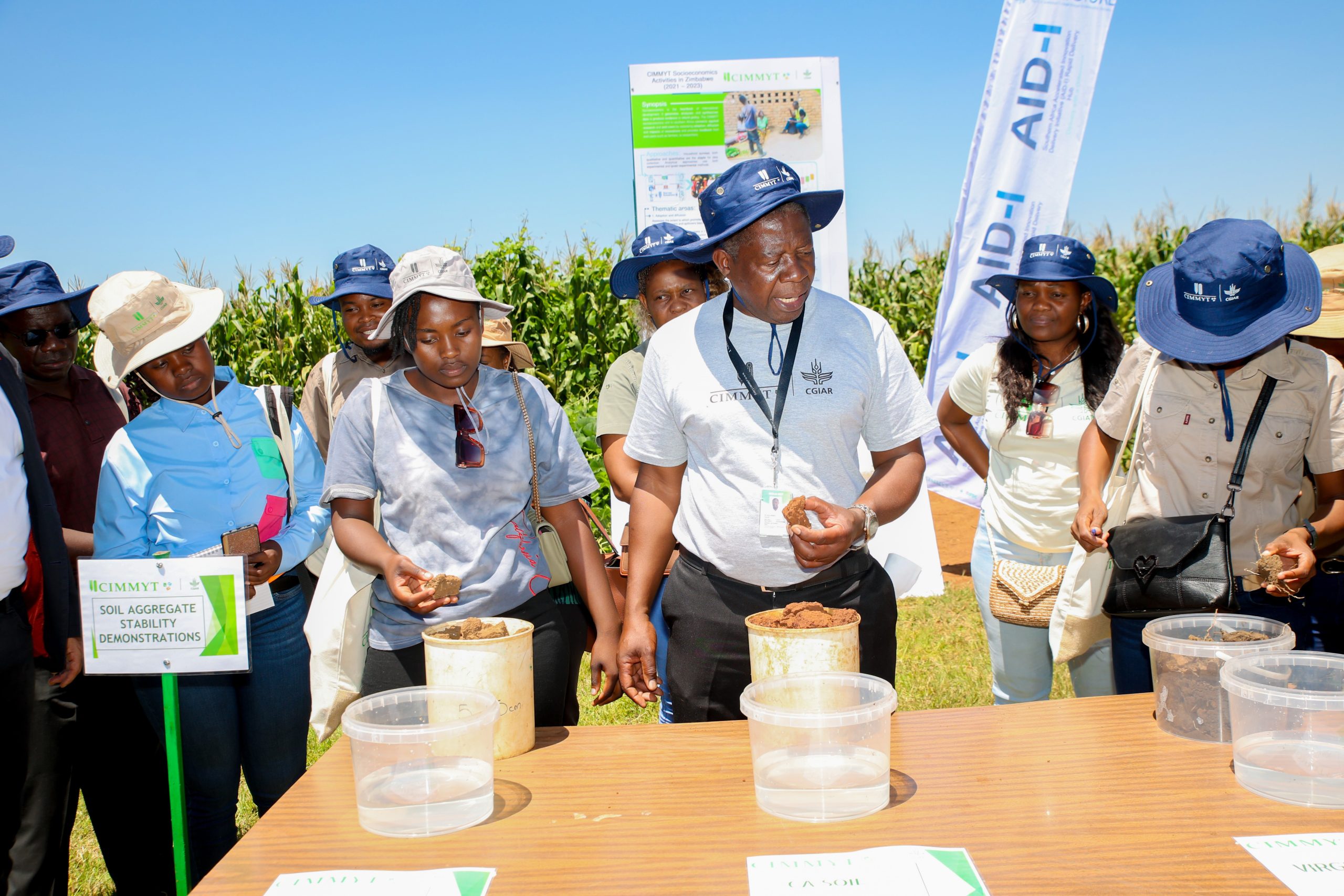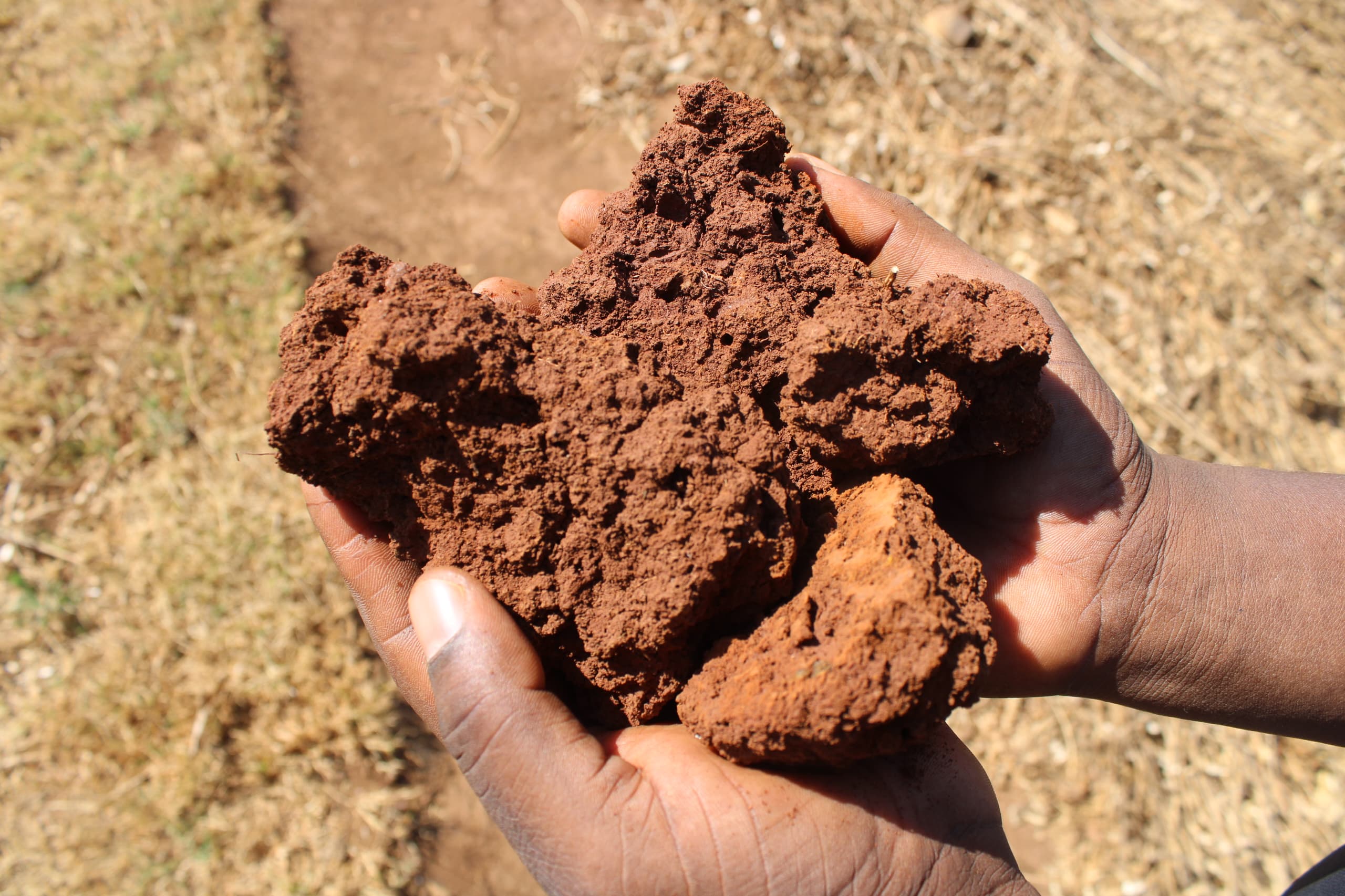Soils are the bedrock for plant health and sustenance, but how do we protect and enhance them to maximize their nutritional potential? Years of conventional farming practices have left many soils depleted, raising urgent concerns about how to rejuvenate them. The recent El Niño event during the 2023/24 farming season in southern Africa, bringing extreme weather conditions—ranging from prolonged droughts to intense floods—has exposed the vulnerability of these soils. Poorly managed soils, already strained by years of excessive tillage and lack of cover, struggle to retain moisture under such stress, leading to crop failures even after rainfall.
However, conservation agriculture (CA) offers a vital solution. By improving soil structure and moisture retention, CA practices provide a lifeline for crops in challenging conditions. Recognizing this, CIMMYT scientists are actively promoting CA among smallholder farmers across sub-Saharan Africa, highlighting its critical role in sustaining soil health and resilience in the face of climate challenges.

Described as lumps of soil particles that bind together strongly, soil aggregates play a vital role in maintaining soil health, supporting plant growth, and sustaining agricultural productivity. Formed by the combined effects of biological, chemical, and physical processes, the structure and stability of soil aggregates are crucial for several soil functions—primarily water infiltration, root growth, and resistance to erosion. Soil aggregates consist of various soil particles, including sand, silt, clay, and organic matter. There are different types of soil aggregates, including macroaggregates (>0.25 mm) and microaggregates (<0.25 mm), with macroaggregates typically more stable and beneficial for soil structure and functions.
Demonstrating the value of soil aggregate stability

Imagine three soil aggregate samples taken from the same field but under different management regimes—from virgin soil that has not been previously cropped, to land under conservation agriculture practices for the last 5 to 8 years, and soil conventionally ploughed annually before crop planting for many years. When these soil aggregates are gently immersed in clear water, stark differences can be noted. The aggregates from conventionally tilled soil, weakened by years of intensive cultivation, quickly disintegrate, turning the water murky and brown.
In contrast, the aggregates from virgin soil remain intact, preserving the water’s clarity even after several hours. The CA soil aggregates exhibit much better stability than those from the conventionally tilled soil but fail to remain as intact as those from the natural virgin soil. A simple lesson is drawn from this demonstration! Restoring degraded soils is a serious challenge. Even after 5 years of CA practices, soil organic carbon levels may only show modest improvement, and the aggregates, while more stable, still don’t match the condition of aggregates from virgin soil.
Soil recovery from a degraded state is a slow process that is not “a walk in the park.” Transitioning from conventional tillage to CA is challenging and slow, requiring years to rebuild organic matter and improve aggregate stability. Patience and careful soil management are vital, as degradation can occur rapidly, but recovery is a lengthy process. However, incorporating organic soil amendments like manure and compost, along with diversifying crops by introducing legumes such as cowpea, groundnut, soybean, mucuna, and pigeon pea, can accelerate this recovery. While degradation occurs rapidly, soil restoration demands a long-term commitment, but the rewards are worth the effort.
Exploring conservation agriculture as a source to improve soil health
Conservation agriculture is built on three key principles: reduced soil disturbance, permanent soil cover, and diverse crop rotation. Minimizing soil disturbance helps preserve soil structure, while permanent soil cover shields the soil against splash erosion and boosts microbial activity. Crop rotation enhances soil fertility, maintains aggregate structure, and disrupts pest and disease cycles. These principles are essential for soil recovery and the retention of organic matter.
Among these, permanent soil cover is often the most challenging for farmers to implement, yet it is critical for effective soil management. Demonstrating its importance, a simple test with water applied to soil samples with varying levels of cover illustrates splash erosion effects.
“Such a simple test mimics real-life conditions farmers face during rains. Soils without cover suffer significant erosion, while those with minimal or substantial cover show reduced erosion and improved water retention. This emphasizes the importance of maintaining permanent soil cover to foster microbial activity and enhance soil health,” highlighted Isaiah Nyagumbo, cropping systems agronomist.
In a nutshell, soil aggregate management is fundamental to climate resilience and agricultural sustainability. Through the adoption of conservation agriculture practices, smallholder farmers can significantly improve soil health, enhance water and nutrient retention, and increase crop resilience to climate stress. The journey from degraded to healthy soil is long and challenging, but with careful management and patience, the benefits are profound and lasting. By understanding and implementing these principles, farmers can build a more sustainable and resilient food system.

 Climate adaptation and mitigation
Climate adaptation and mitigation 
